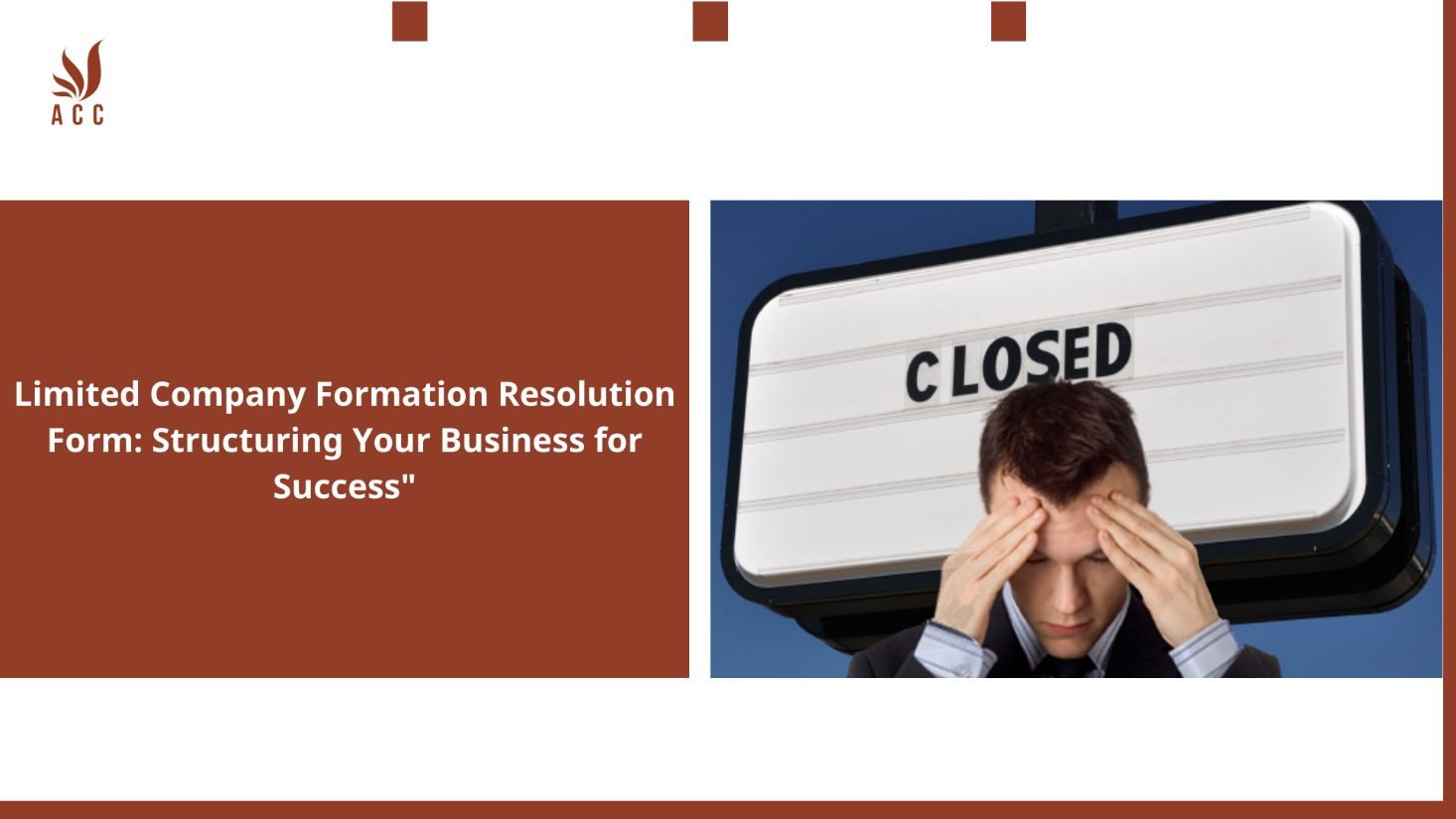Setting up a limited company involves a series of crucial steps, and one that holds particular significance is the creation of a resolution form. This document serves as the backbone of decision-making processes within the company, ensuring clarity, legality, and efficiency. In this article, we'll delve into the intricacies of resolution forms, their components, and why they are indispensable for any thriving limited company.

1. Understanding the Resolution Form
Definition and Purpose
A resolution form is a formal document that outlines decisions made by a company's stakeholders. It serves as a record of agreement on significant matters and is legally binding.
Key Components of a Resolution Form
- Title and date of the resolution
- Clear statement of the decision
- Signatures of relevant stakeholders
2. Legal Requirements
In the realm of company law, compliance is paramount. The resolution form must adhere to legal standards to maintain the company's standing and protect its stakeholders.
3. Steps to Create a Resolution Form
Identifying Resolutions Needed
Before drafting a resolution form, it's crucial to identify the decisions that require documentation. This may include appointing directors, approving financial decisions, or amending the company's articles of association.
Drafting the Document
Crafting a resolution form demands precision. The language should be clear, and all relevant details must be included. Legal consultation during this process is advisable.
4. Importance of Clarity in Resolutions
Ambiguity in resolution forms can lead to misunderstandings and potential legal issues. Clear and concise language is vital to ensuring that all stakeholders have a unified understanding of the decisions made.
5. Benefits of a Well-Prepared Resolution Form
A meticulously prepared resolution form offers legal protection. In case of disputes or audits, having a documented record of decisions can be invaluable. Moreover, it streamlines the decision-making process, preventing delays.
6. Common Mistakes to Avoid
Incomplete information and lack of legal review are common pitfalls. Rushing through the resolution process can lead to oversights that may have long-term consequences. Thoroughness is key.
7. Incorporating Digital Solutions
In the digital age, companies are increasingly turning to technology to streamline processes. Digital resolution forms not only expedite decision-making but also ensure the security and authenticity of the document.
8. Tailoring Resolutions for Business Goals
Resolution forms should align with the broader objectives of the company. Adapting them to changing needs ensures that the decision-making process remains relevant and effective.
9. Training and Communication
Educating stakeholders on the importance of resolution forms and keeping them informed about ongoing decisions foster a culture of transparency and accountability. Regular reviews of existing resolutions are essential. As the business landscape evolves, resolutions may need to be amended to reflect new circumstances or goals.
Exploring success stories and challenges related to resolution forms provides practical insights. Learning from others' experiences can help companies refine their own practices. Setting a clear agenda and facilitating productive discussions during resolution meetings enhance the effectiveness of the decision-making process.
As technology advances and legal requirements evolve, staying informed about future trends in company resolutions is vital for proactive governance.
10. Conclusion
In conclusion, a well-crafted resolution form is not just a bureaucratic requirement; it's a fundamental aspect of effective corporate governance. Companies that prioritize clarity, legality, and efficiency in their decision-making processes are better equipped to navigate the complexities of the business world. Embrace the resolution form as a tool for success, and watch your company thrive.
FAQs
-
Why is a resolution form important for a limited company?
- A resolution form is crucial for documenting decisions, ensuring legal compliance, and providing a clear record of agreements among stakeholders.
-
What are the key components of a resolution form?
- The key components include the title and date of the resolution, a clear statement of the decision, and the signatures of relevant stakeholders.
-
How often should resolutions be reviewed and updated?
- Resolutions should be reviewed periodically, especially when there are changes in the business landscape or company objectives.
-
Can digital resolution forms replace traditional paper forms?
- Digital resolution forms offer efficiency and security, making them a viable alternative to traditional paper forms.
Nội dung bài viết:






Bình luận